How to Fix a Cracked TV Screen from the Inside: Worth the Effort?
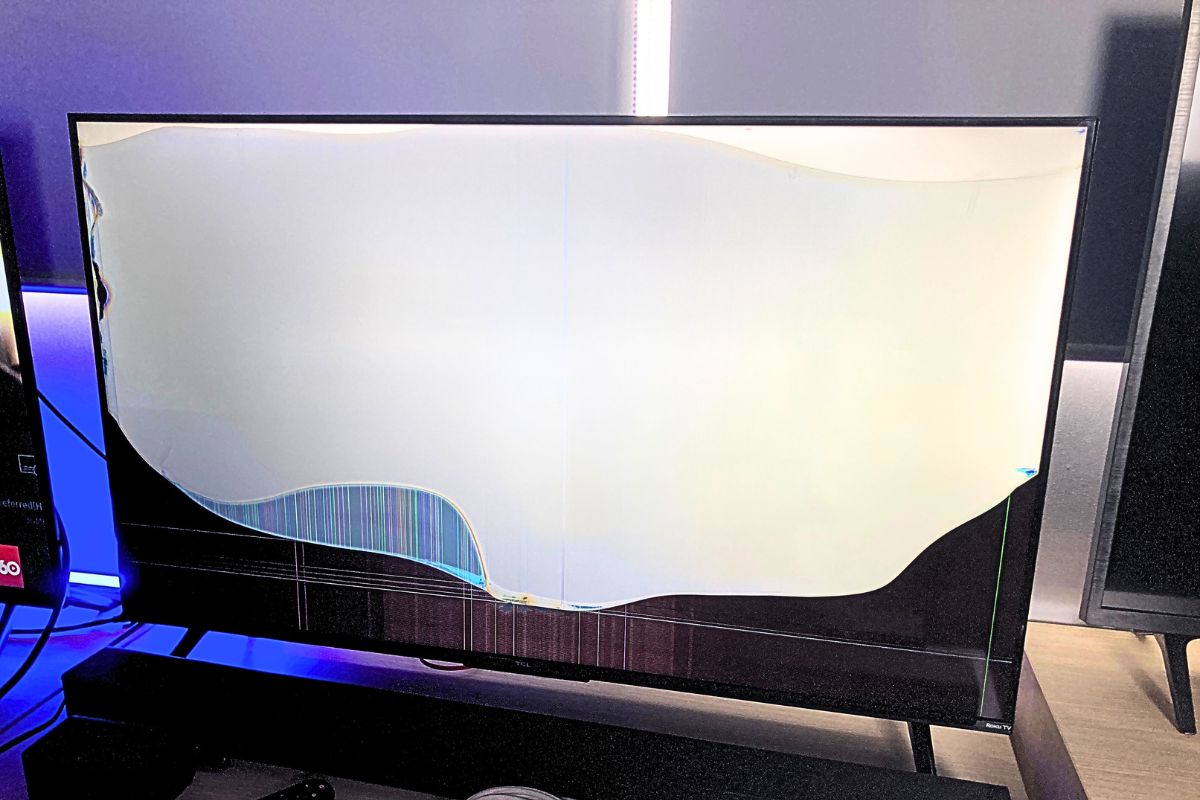
What To Know
- Internal TV screen cracks are often caused by overheating, with preventive measures including regular cleaning and ensuring proper ventilation.
- Repairing an internally cracked screen is complex and costly, often making it more practical to purchase a new TV.
- To reduce the risk of overheating, monitor your TV’s temperature, limit its usage, and maintain clear storage by managing apps and settings.
Out of the blue, when you turn on the TV, you’re greeted with something utterly horrifying: a cracked screen!
You know you didn’t damage it from the outside, so could it be cracked internally?
And if so, is there a solution?
Keep reading to find out!
Quick Navigation
How to Check if a Screen Is Cracked Internally?
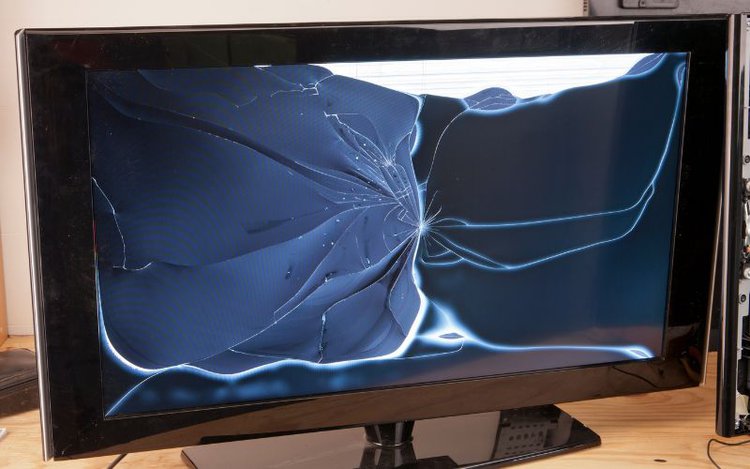
To see if a TV screen is cracked internally, check if there are any cracks along the outside of the screen.
To see if your TV’s cracks are internal or external, turn your TV off. Then, closely examine the outside of the TV screen, looking for any minute cracks.
You may also want to gently rub your hand over the TV screen to see if you can feel any cracks. Although it is usually inadvisable to touch the TV screen with your bare hands, we recommend doing this once as it is the best way to feel for any imperfections in the screen.
You can also do this using a soft microfiber cloth. Again, please be extremely gentle during this process to not further damage the screen.
If you don’t feel any cracks in the screen and find that they’re only visible when the TV is turned on, then they’re most likely internal.
It’s also a good idea to try soft resetting your TV to see if the picture’s imperfections are caused by the pixels glitching.
Unplug your TV for 30 seconds or so before plugging it back in. If the image flaws are still there when the TV reboots, you’ve got an internally cracked TV screen.
What Causes an Internal Crack in a TV Screen?
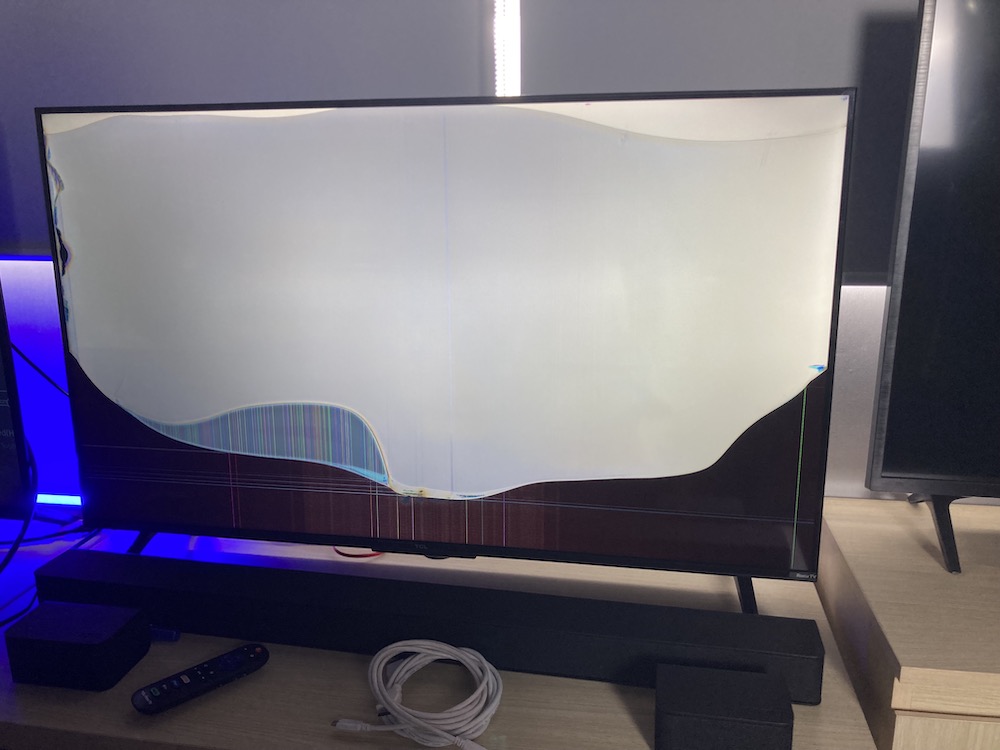
Overheating is the leading cause of internal TV screen cracks.
While TVs don’t overheat as frequently as phones or computers, it does happen. This is a particularly prevalent problem for smart TVs that are running complex interfaces and apps.
If your TV is not properly ventilated, has too many apps on it clogging its storage, or is malfunctioning, it may overheat.
The TV’s internal heat can cause the screen and other internal components to expand.
As the pressure builds, the TV can crack from the inside.
Unfortunately, the only way to prevent this is to ensure your TV does not overheat by frequently checking its temperature and unplugging it when it becomes too warm.
This is more likely to happen during the winter as people often place heating appliances next to their TV, unaware that they can overheat the unit and lead to internal cracks.
Keeping your TV’s screen and cables clear of dust can help prevent overheating, as the dust stops the heat from escaping it, insulating the TV.
How Can I Fix It?
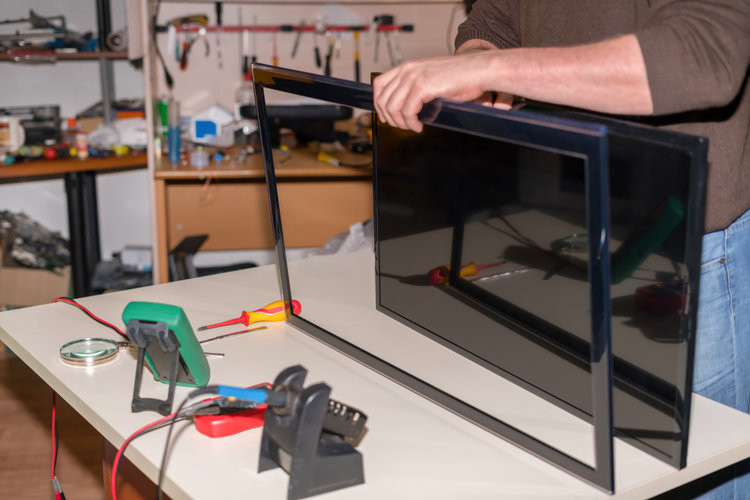
You should take your TV to be professionally repaired.
External TV cracks are difficult enough to repair, but internal cracks are nearly impossible to repair without a technical background.
You may have to replace the TV panel as it may be damaged, which will involve taking apart your TV screen.
This process is quite complex and is best left to trained professionals, especially since some of the TV’s internal components can electrocute you if not properly drained of their electrical charge.
Some of the other internal components may also be damaged from overheating and in need of replacement.
You will also have to purchase and install a new TV panel, which can be quite expensive. Not to mention, you’ll have to purchase any additional specialty tools needed for the repairs.
Is It Worth Fixing a Cracked TV Screen?

No, it’s usually not worth fixing a cracked TV screen.
Fixing a cracked TV can cost hundreds of dollars. This is because TV cracks are difficult to repair, and the TV screen must usually be replaced.
This replacement process can become quite pricey, especially on plasma TVs. You may find yourself paying twice the TV’s original price to fix it. Not to mention, the TV could have additional problems in the future if its other components were damaged.
Additionally, many new smart TVs cost less than TV repairs, and you would be putting your money towards a new unit with the latest smart TV features.
Fixing a TV yourself also voids its warranty, meaning the manufacturer will not cover the cost of repairs for any software issues in the future.
Purchasing a new unit will ensure it comes with a warranty, so you can return or repair it should any software problems pop up.
How to Prevent Internal Cracks on a TV Screen?
You can reduce the likelihood of your TV screen cracking internally by ensuring it does not overheat.
Keep your TV clean by removing any dust on the screen and bezel with a dry microfiber cloth.
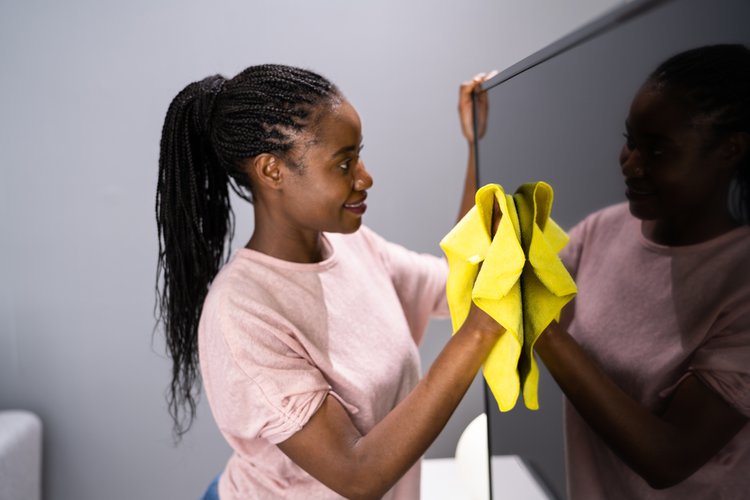
Spacers distance your TV’s mount from the wall bracket and can add up to an extra inch of space between your TV and the wall. Using spacers on wall-mounted TVs also allows for better air circulation behind your unit, preventing hot air from being trapped.
If your TV is in an entertainment unit, ensure there aren’t any objects near it that could stop proper ventilation. Also, avoid draping anything over your TV, as this will only insulate the unit further.
Additionally, you can install some fans if your TV cabinet or entertainment unit is enclosed. We recommend the AC Infinity MULTIFAN S7 , which can be plugged into your TV’s powered USB port.
Watch the video below demonstrating how to set up cooling fans for your TV.
It’s also a good idea to lower your TV’s brightness to limit the amount of energy it’s exerting to display the image on-screen.
You may also want to clear up some of your TV’s storage by deleting apps you don’t use and regularly clearing the cache memory.
Finally, limit your TV time to a few hours. Every TV’s capacity will be different depending on the make, model, and age, so check your TV every hour or so to confirm an appropriate temperature.
If it feels particularly toasty, turn it off and unplug it for half an hour or so until it cools down.
Wrapping Things Up
Your TV screen internally cracking is always an unpleasant surprise, but we urge you to seek professional help instead of trying to fix it yourself.
Internal TV cracks are oftentimes the result of overheating, and your TV’s hardware could be damaged and in need of repair.
Additionally, the TV screen will have to be replaced, which is a complicated and highly technical process. These repairs are often more expensive than the TV itself, so it’s usually best to purchase a new TV entirely.
To prevent your TV from overheating in the future, ensure it’s dust-free, use spacers if the unit is wall-mounted, and clear up storage space. Also, check its temperature every hour or so to ensure it’s not getting too hot.
Has your TV screen ever cracked internally? Did you opt to fix it or replace your TV altogether?
Let us know in the comments below!
Yesenia Achlim is a technical copywriter and editor with a focus on AV equipment. She aims to break down complicated topics and make technology accessible, no matter your technical expertise. When she’s not teaching you how to replace a projector lamp, you can find her reading and baking.

